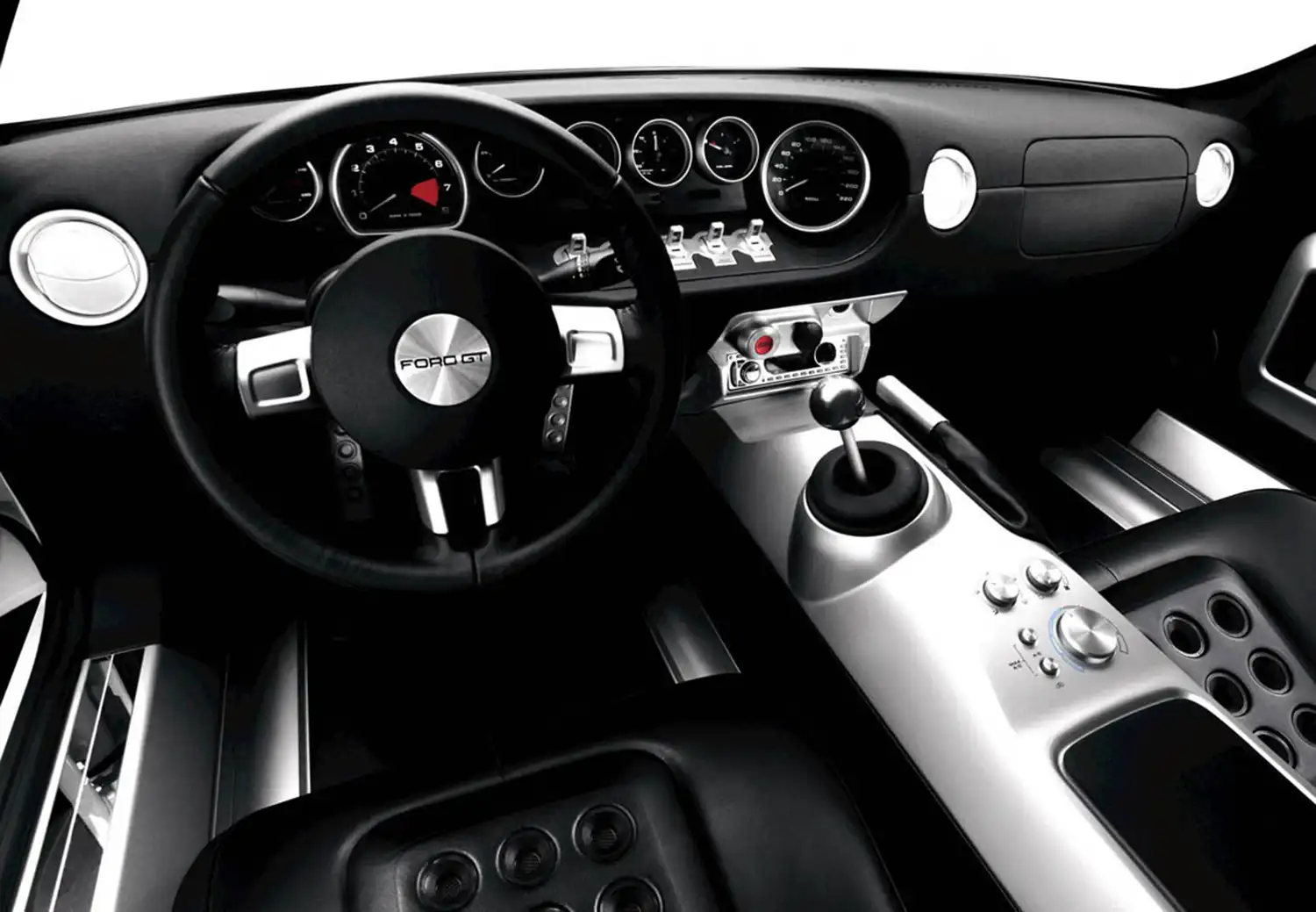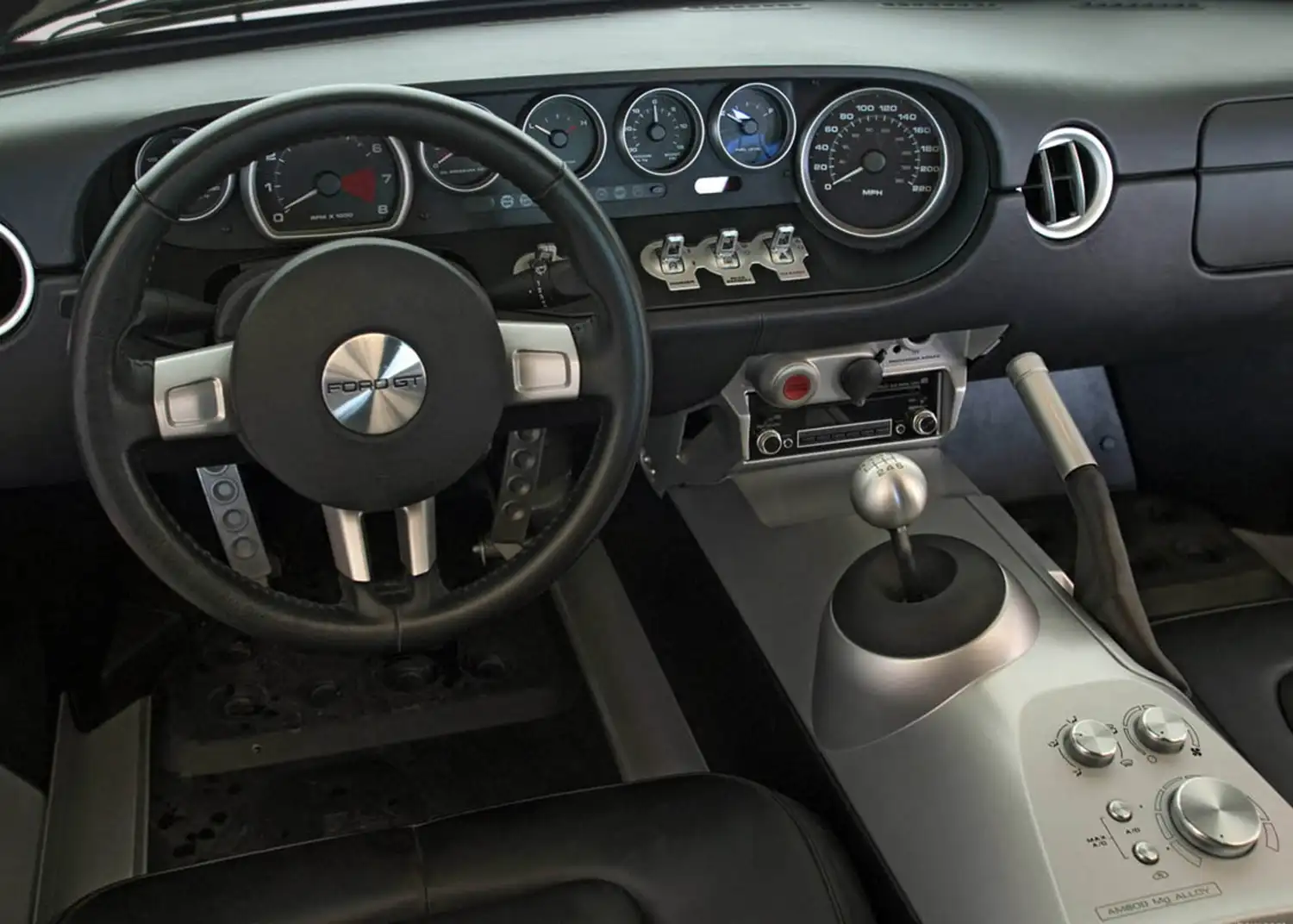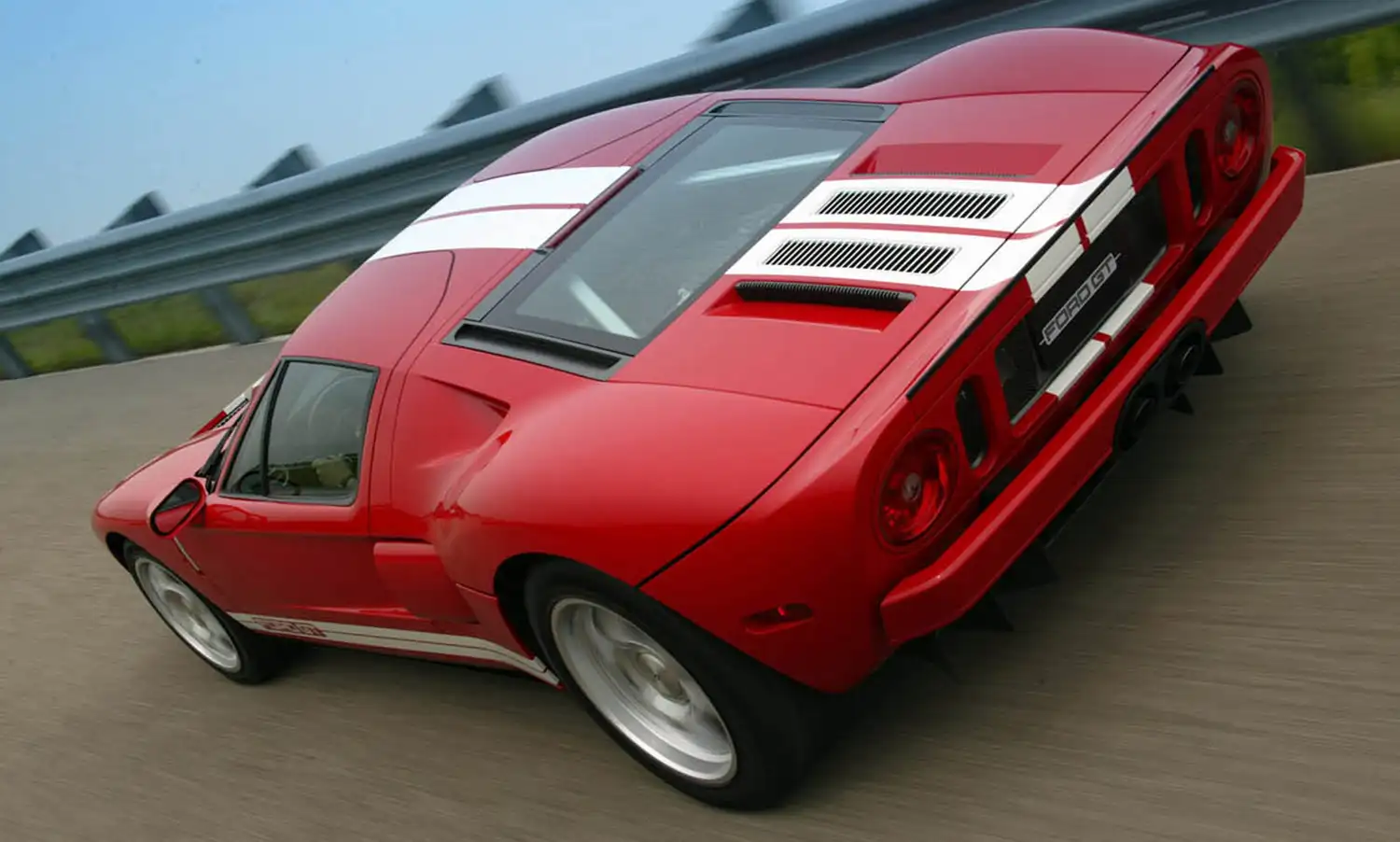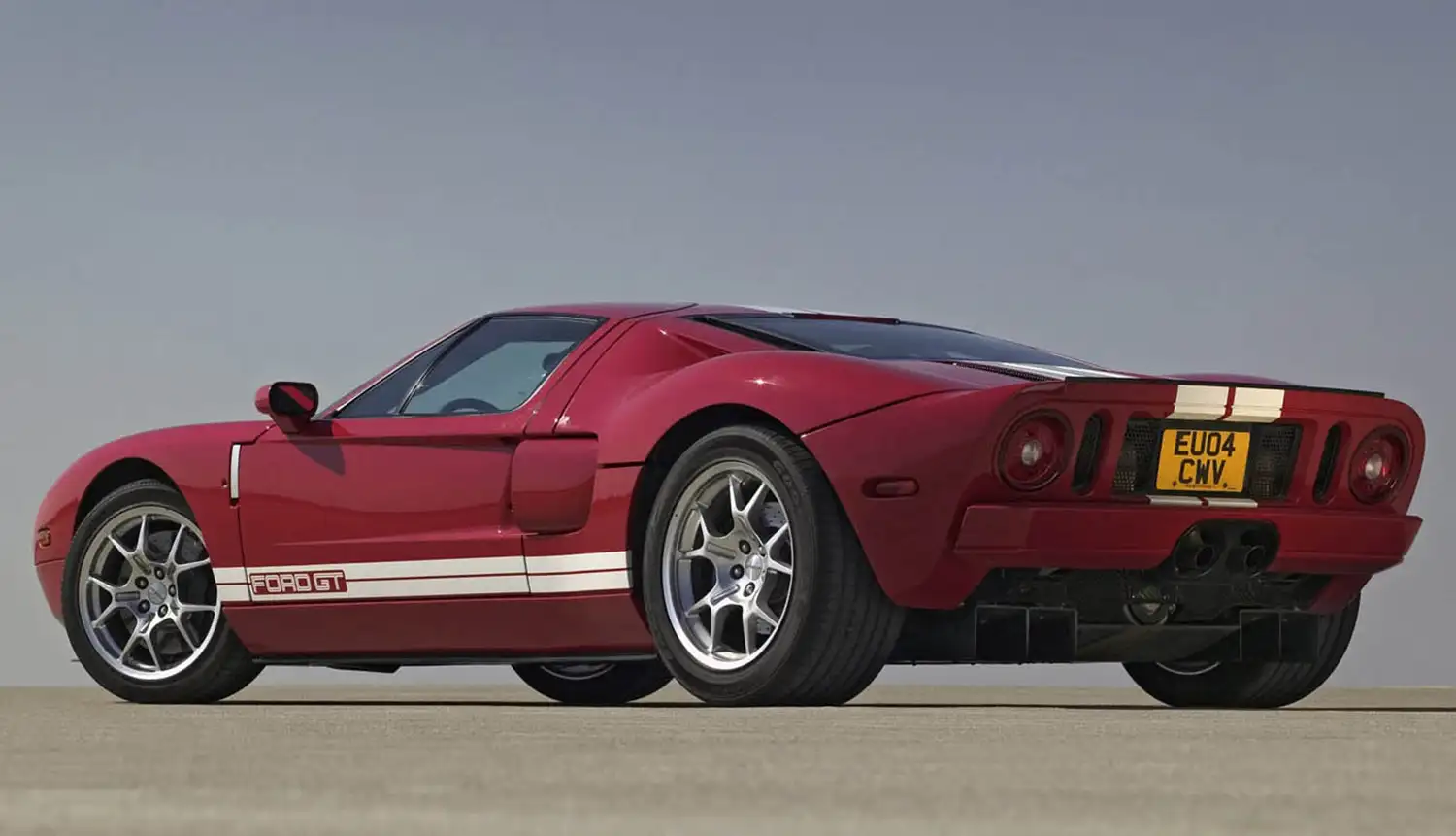
Unveiled at the 2002 North American International Auto Show, the Ford GT40 concept captivated enthusiasts worldwide with its homage to a legendary era in automotive history. Just 45 days later, Ford astonished the industry by confirming plans for a production version. The Ford GT40 concept was more than a mere revival; it symbolized Ford’s dedication to heritage while embracing modern automotive advancements.

Design and Dimensions
While paying tribute to its iconic predecessor, the production Ford GT40 featured dimensions and design elements that set it apart. Taller and longer than its racing ancestor, the new GT40 retained the sleek and aerodynamic profile that defined its lineage. The design seamlessly blended historical cues with contemporary styling, including HID headlamps and 18-inch front / 19-inch rear wheels wrapped in Goodyear Eagle F1 Supercar tires.

Interior and Features
Inside, the GT40 continued its blend of heritage and innovation with ventilated leather seats and analog gauges reminiscent of the original’s instrument layout. The minimalist approach emphasized driver engagement while incorporating modern amenities essential for today’s automotive enthusiasts.

Performance and Powertrain
- Engine: The heart of the beast was a 5.4-liter supercharged MOD V8 engine, proudly displaying “Powered by Ford” on its aluminum coil covers.
- Power Output: Producing 550 horsepower and 500 lb-ft of torque, the GT40 delivered exhilarating performance akin to its racing heritage.
- Acceleration: Achieving 0-60 mph in approximately 3.3 seconds, the GT40 showcased its impressive acceleration capabilities.
- Top Speed: With a top speed exceeding 205 mph, the GT40 underscored its credentials as a high-performance supercar.
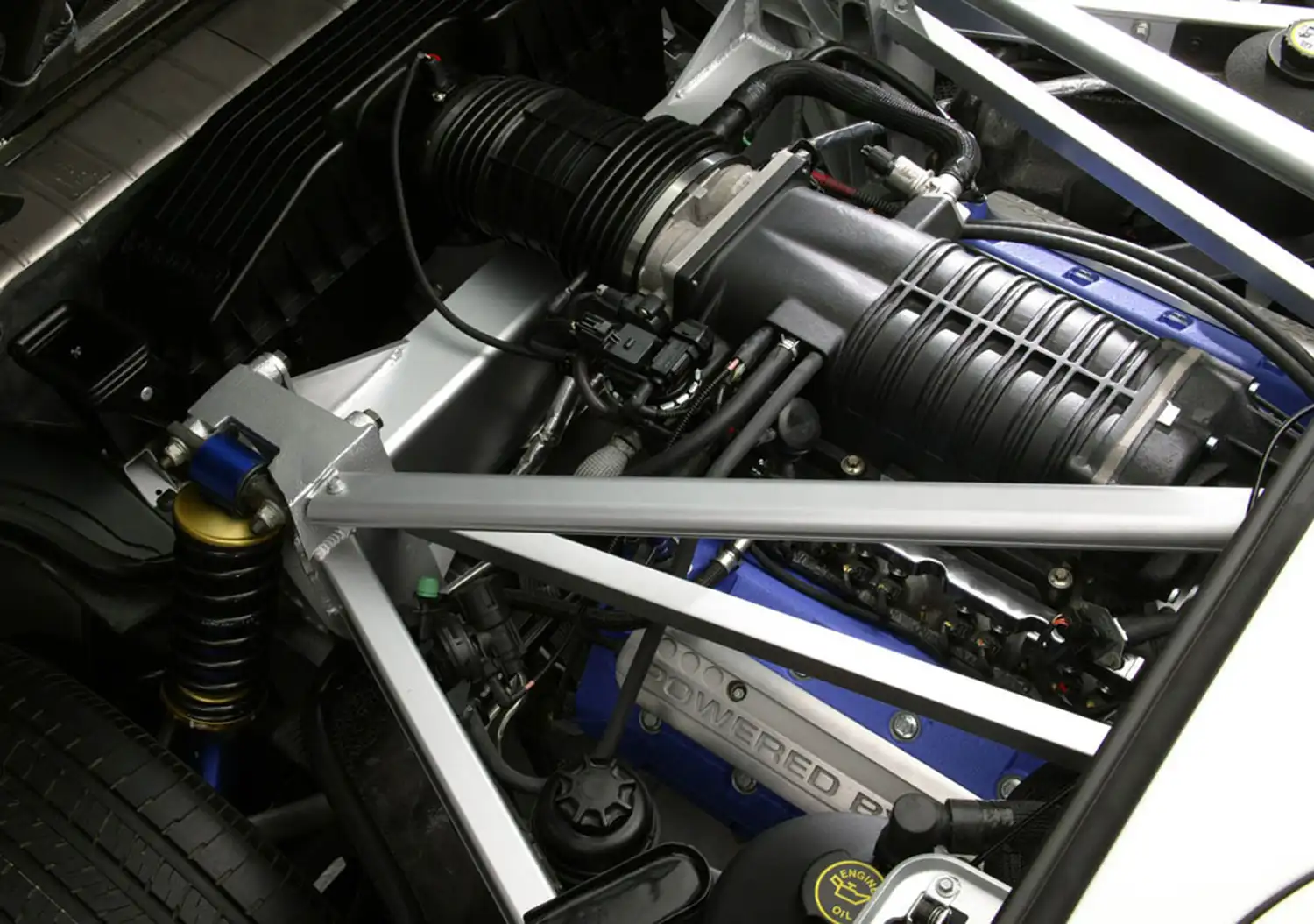
Chassis and Technology
Underpinning the GT40 was an advanced aluminum space frame, meticulously engineered for both structural rigidity and weight efficiency, akin to a race car chassis. This technology supported the GT40’s race-derived aerodynamics and contributed to its top speed of over 205 mph. Technological innovations abounded, from super-plastic-formed aluminum body panels to a friction-stir welded center tunnel. The GT40’s performance was further enhanced by precision-cast aluminum suspension components and Brembo monoblock brakes.

Historical Significance
Reflecting on its racing heritage, the Ford GT40 celebrated Ford’s historic victories at Le Mans, where it forever altered the landscape of motorsports. With its 550 horsepower and 6-speed manual transaxle, the GT40 stood as a testament to Ford’s engineering prowess and commitment to performance.

In essence, the Ford GT40 was more than a car; it was a symbol of innovation, craftsmanship, and the enduring spirit of racing excellence. Its blend of historical tribute and modern engineering ensured its place in automotive history as a modern icon.
Source: Ford
This Article use tools from Chatgpt


